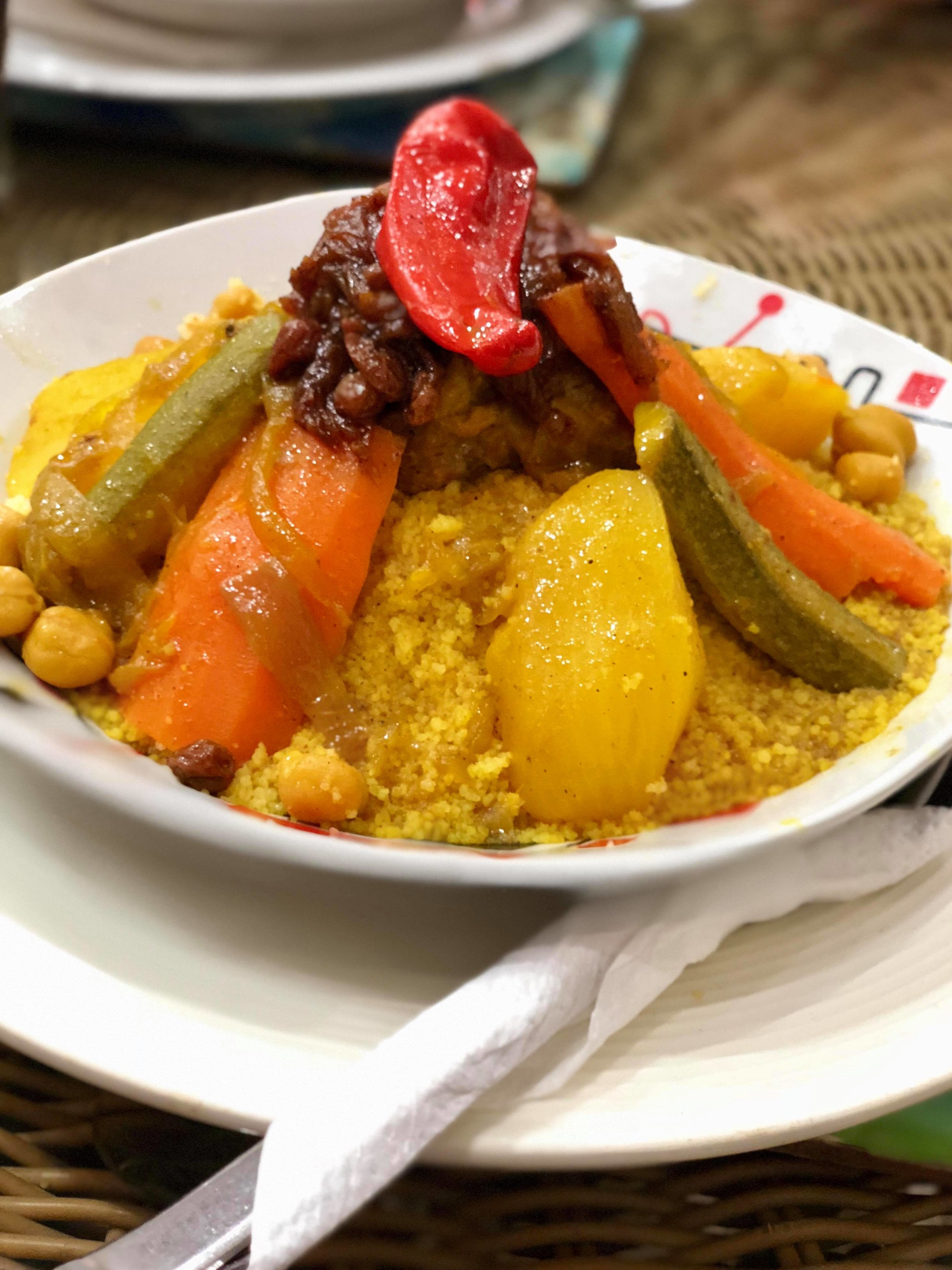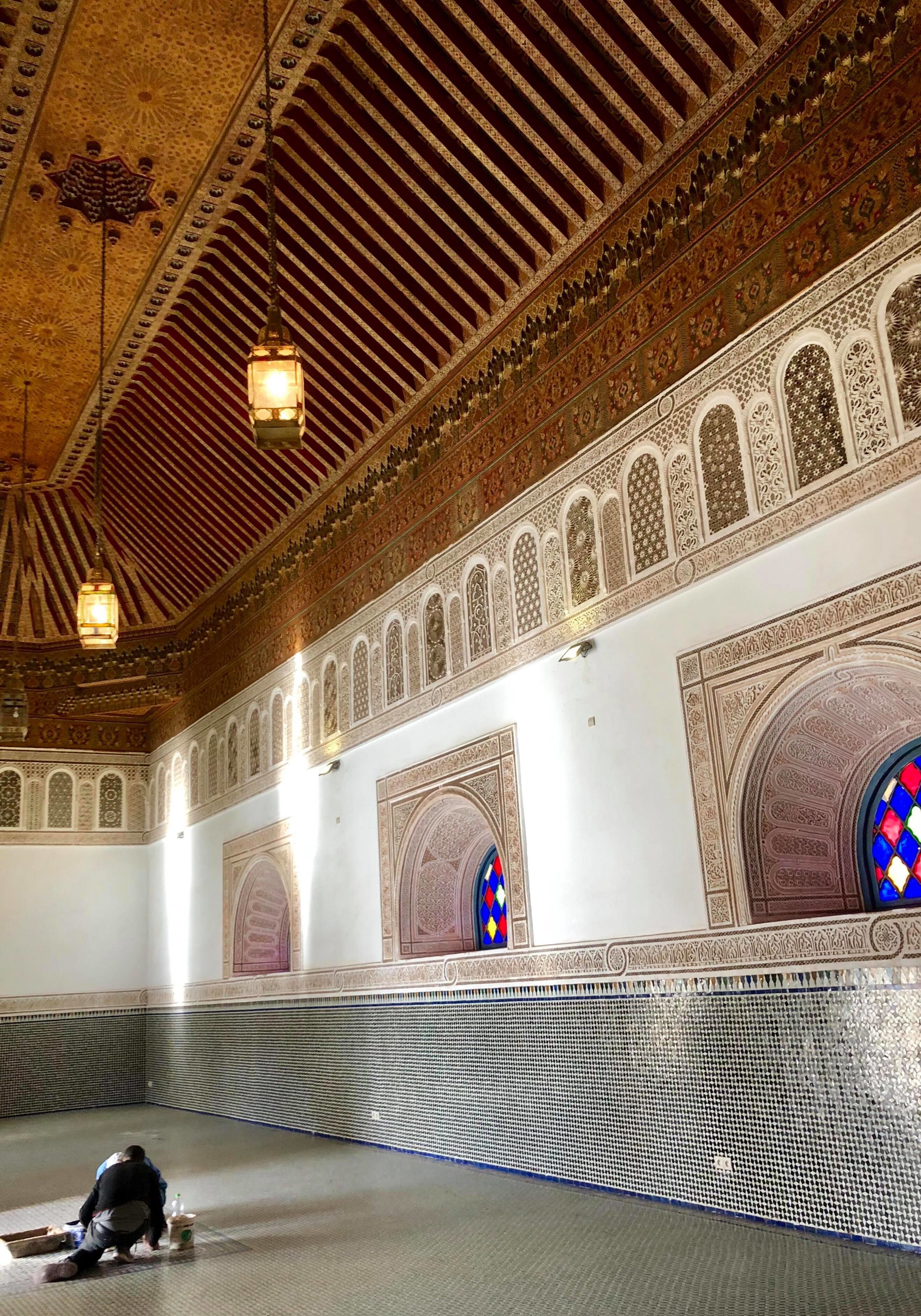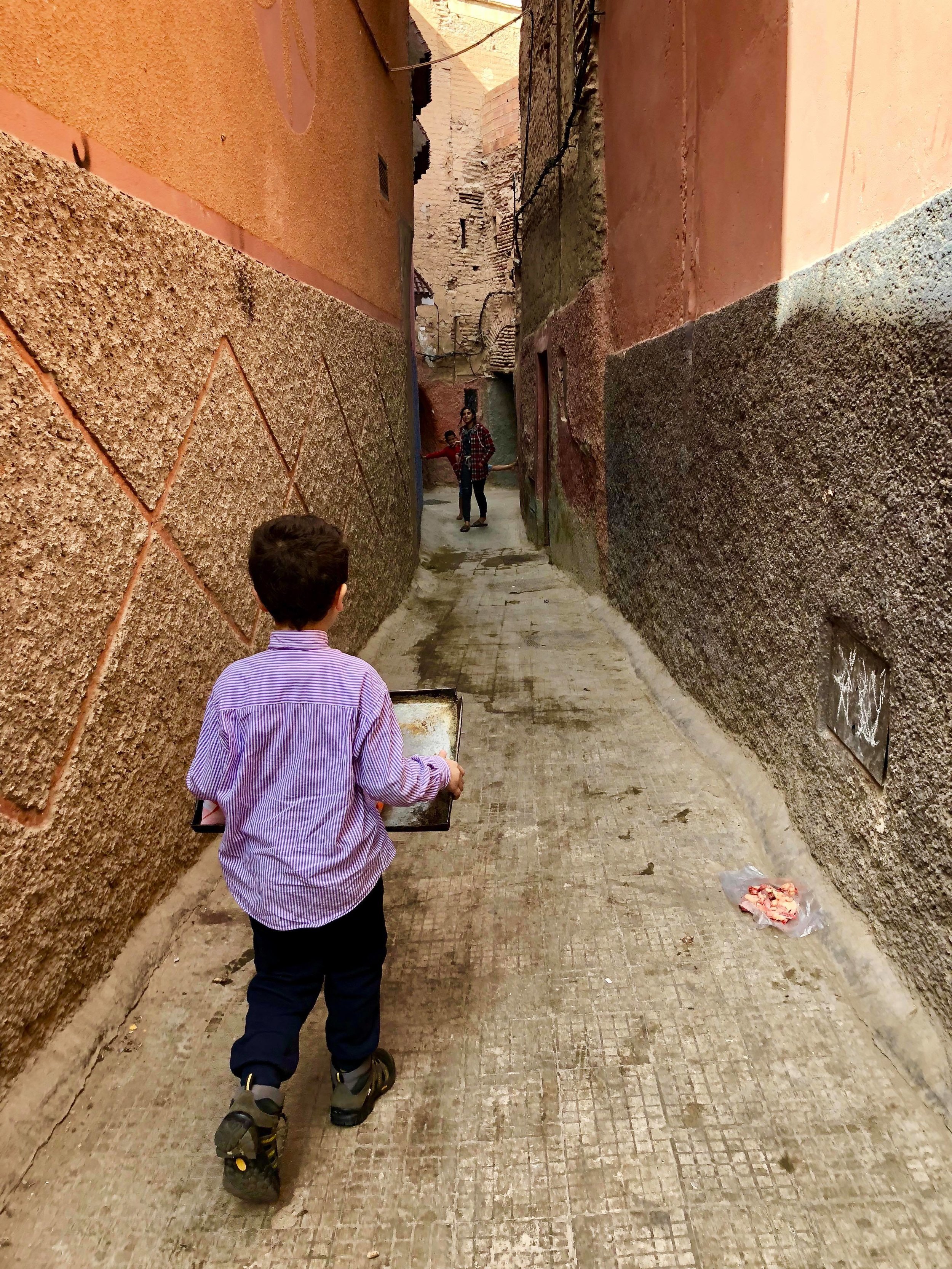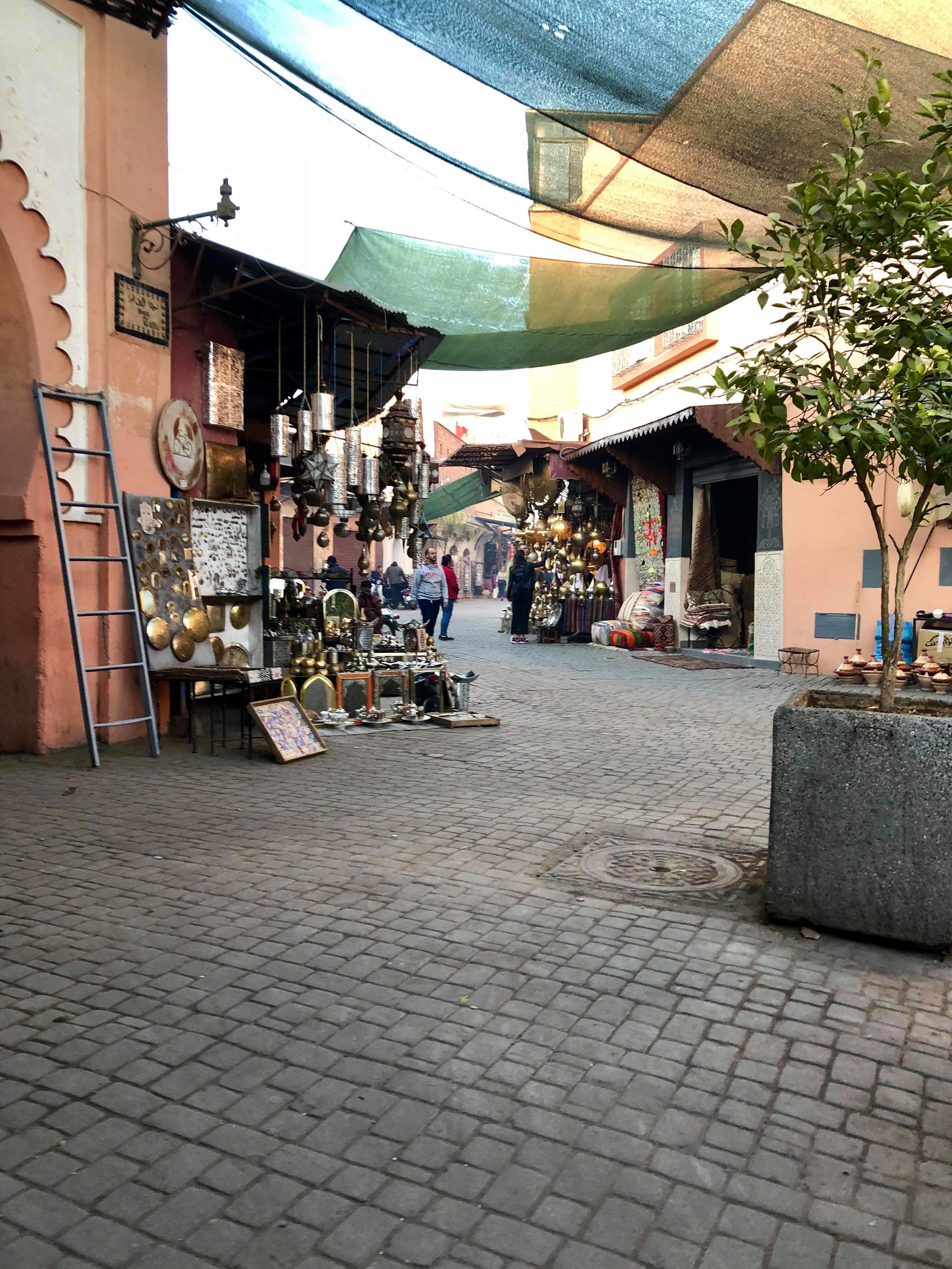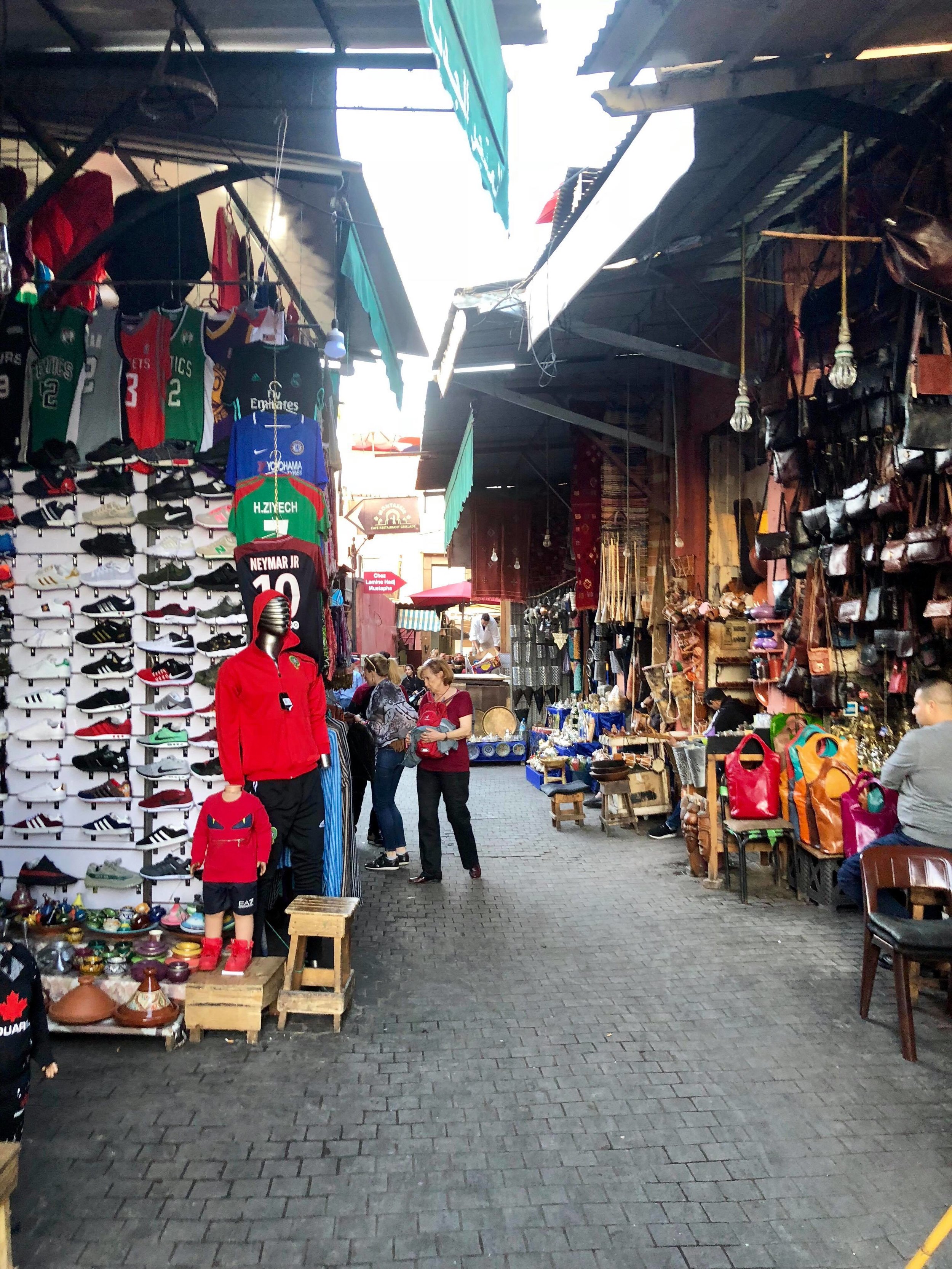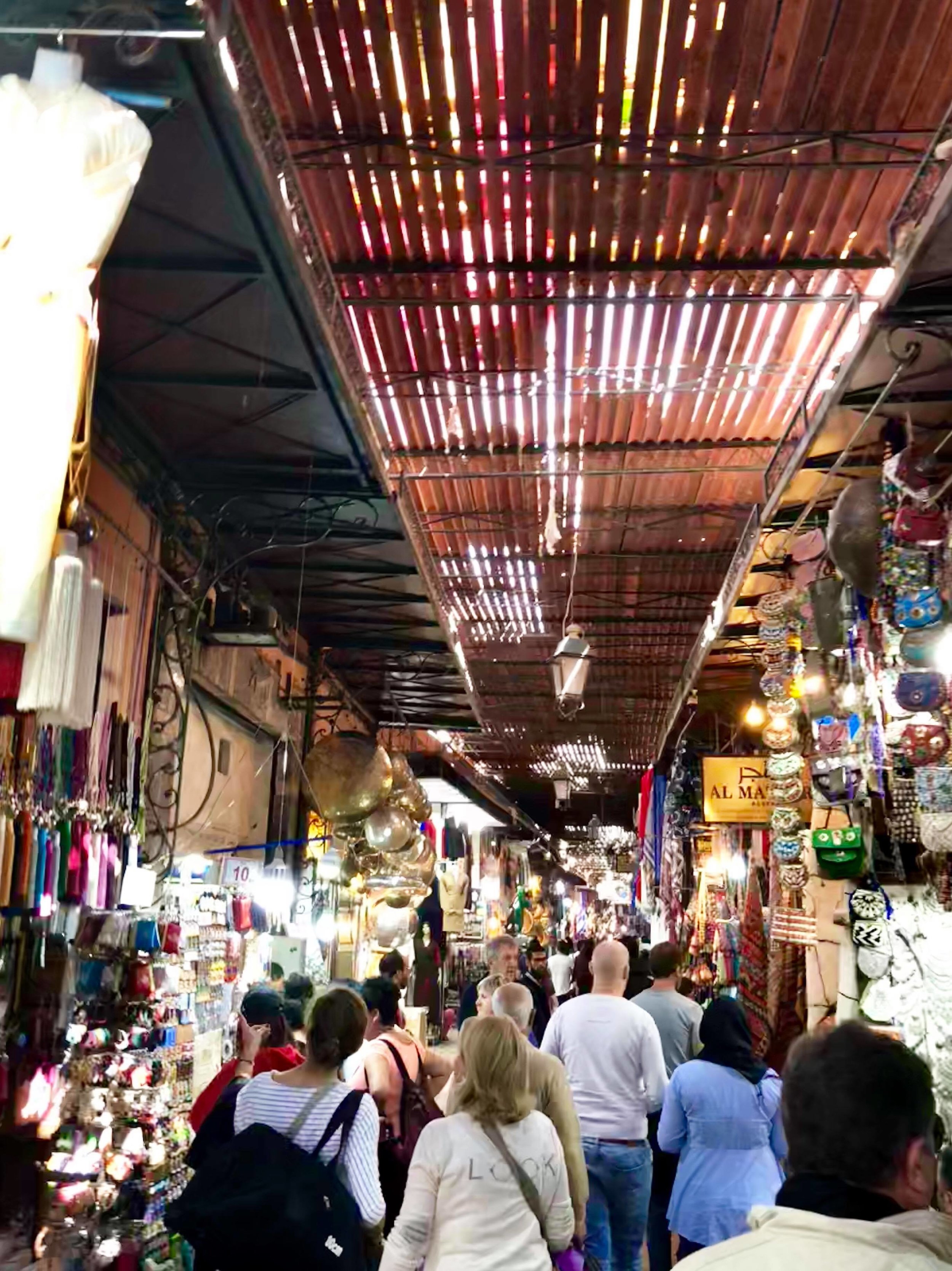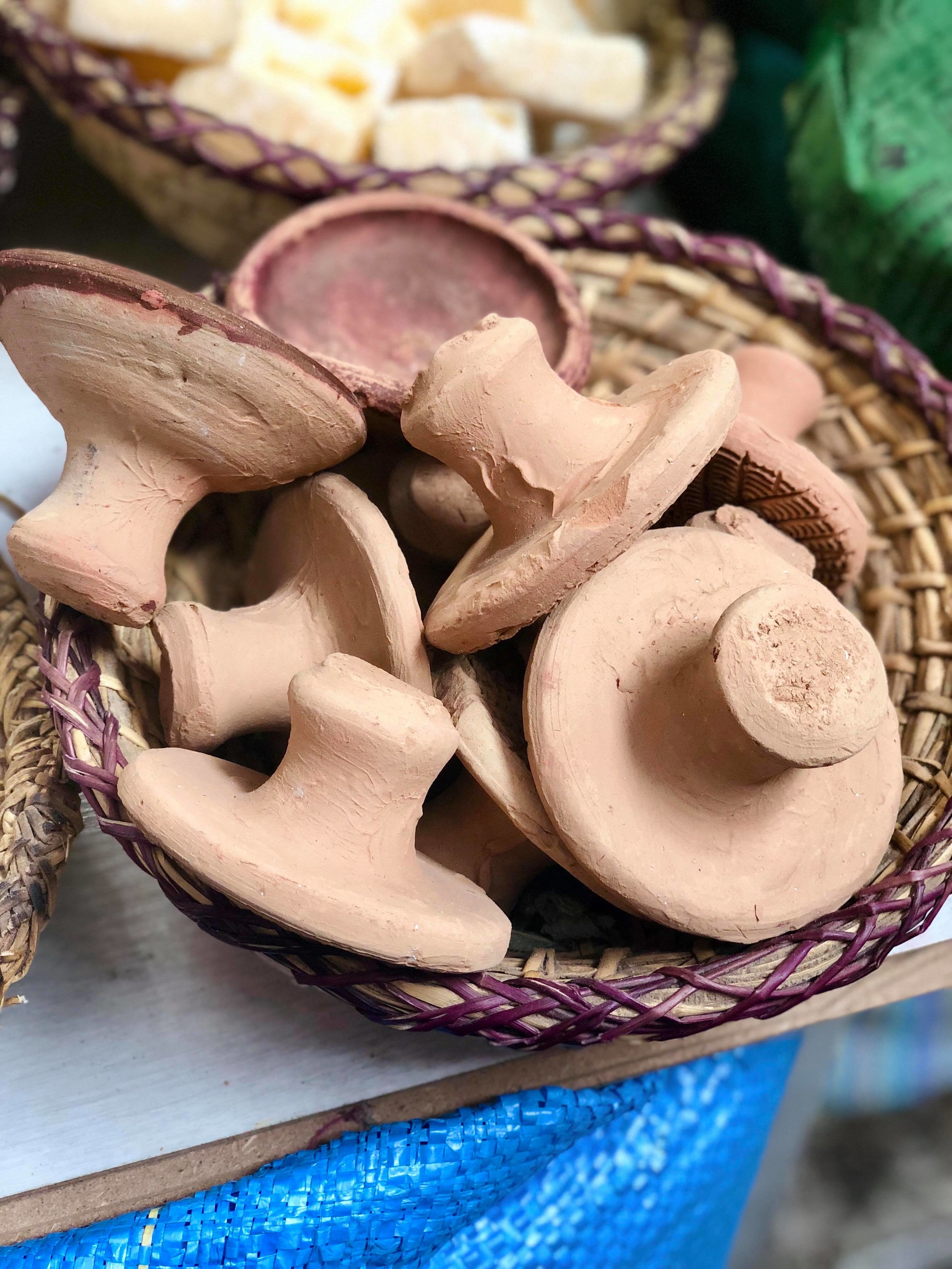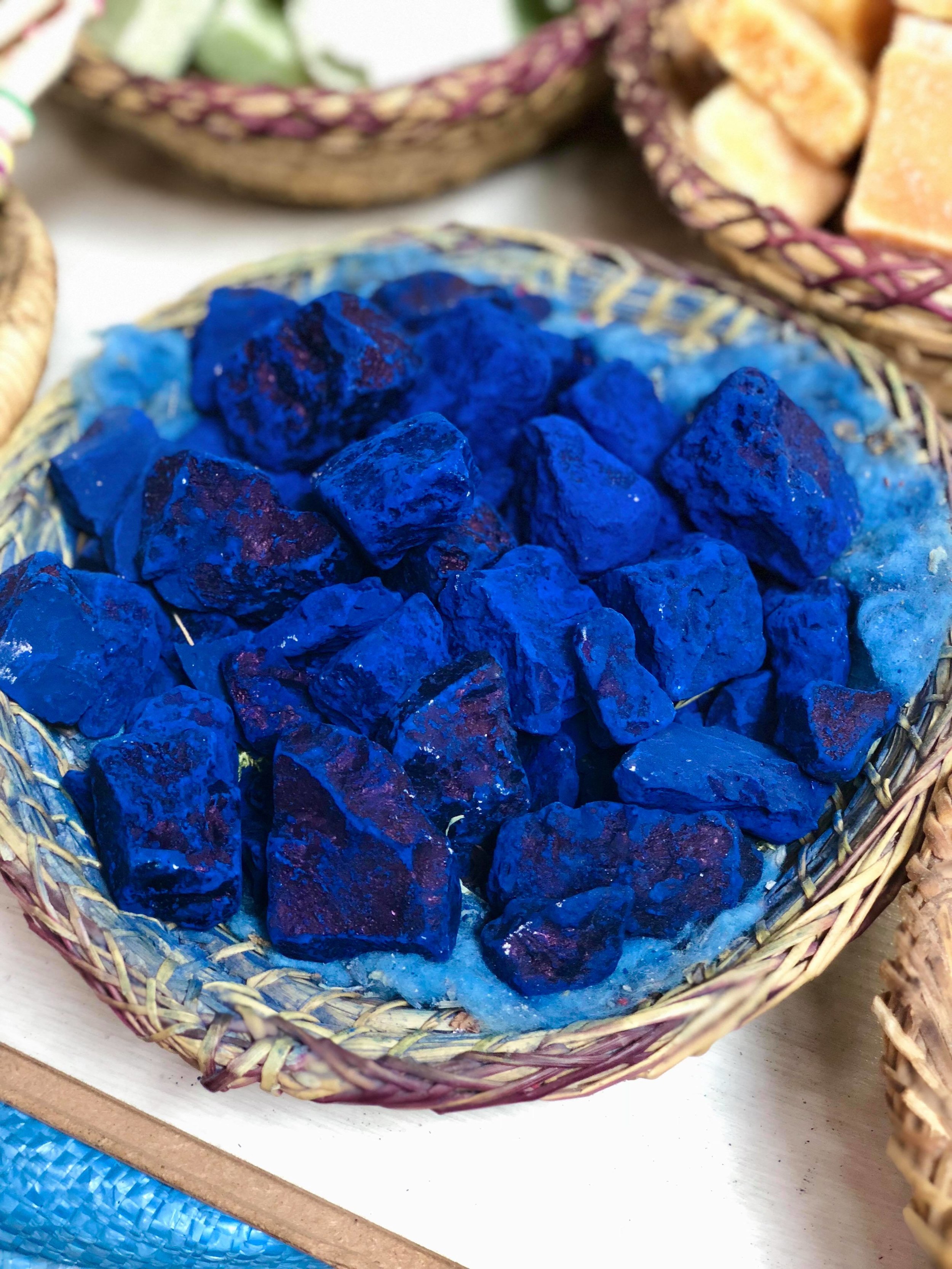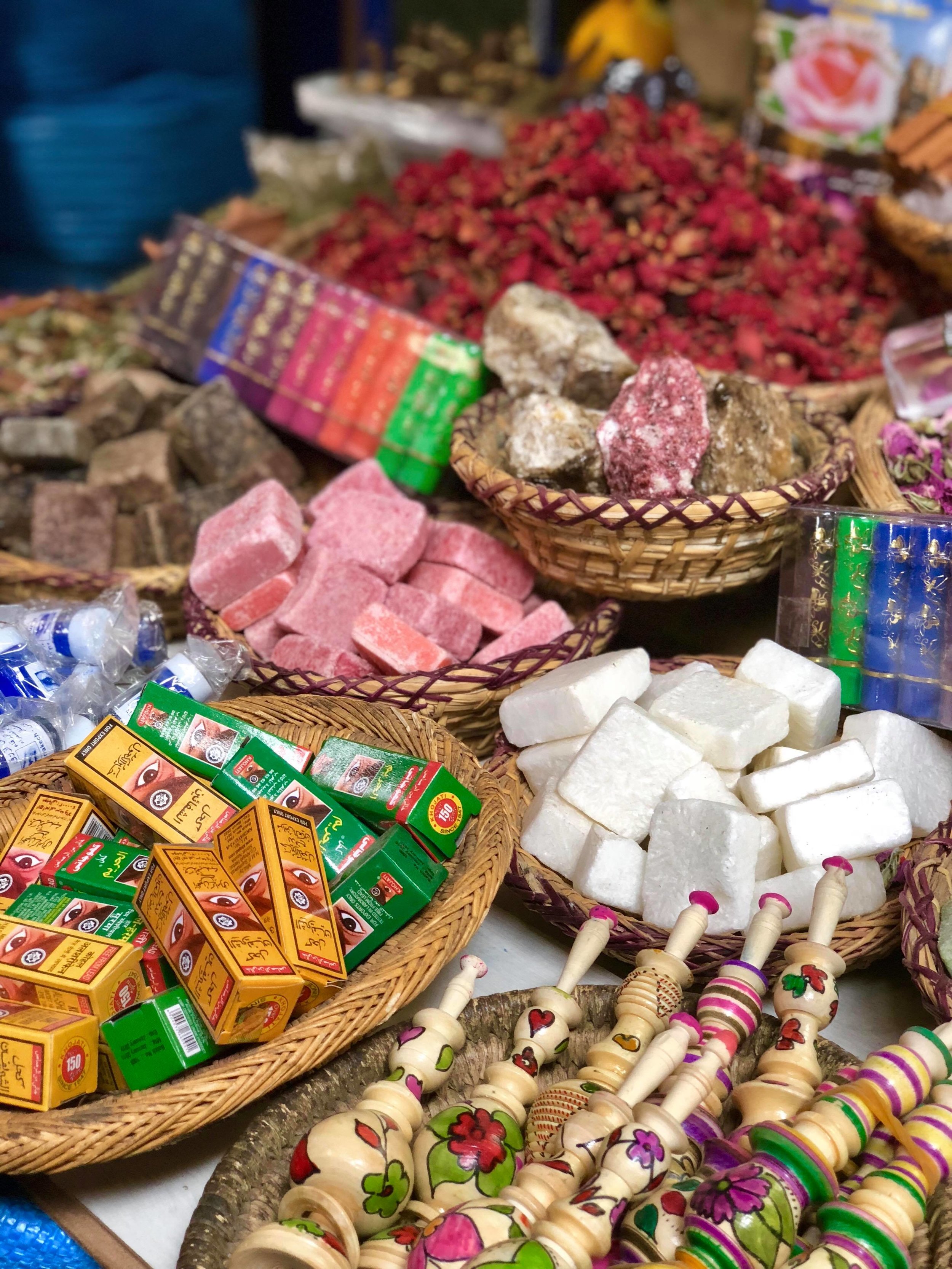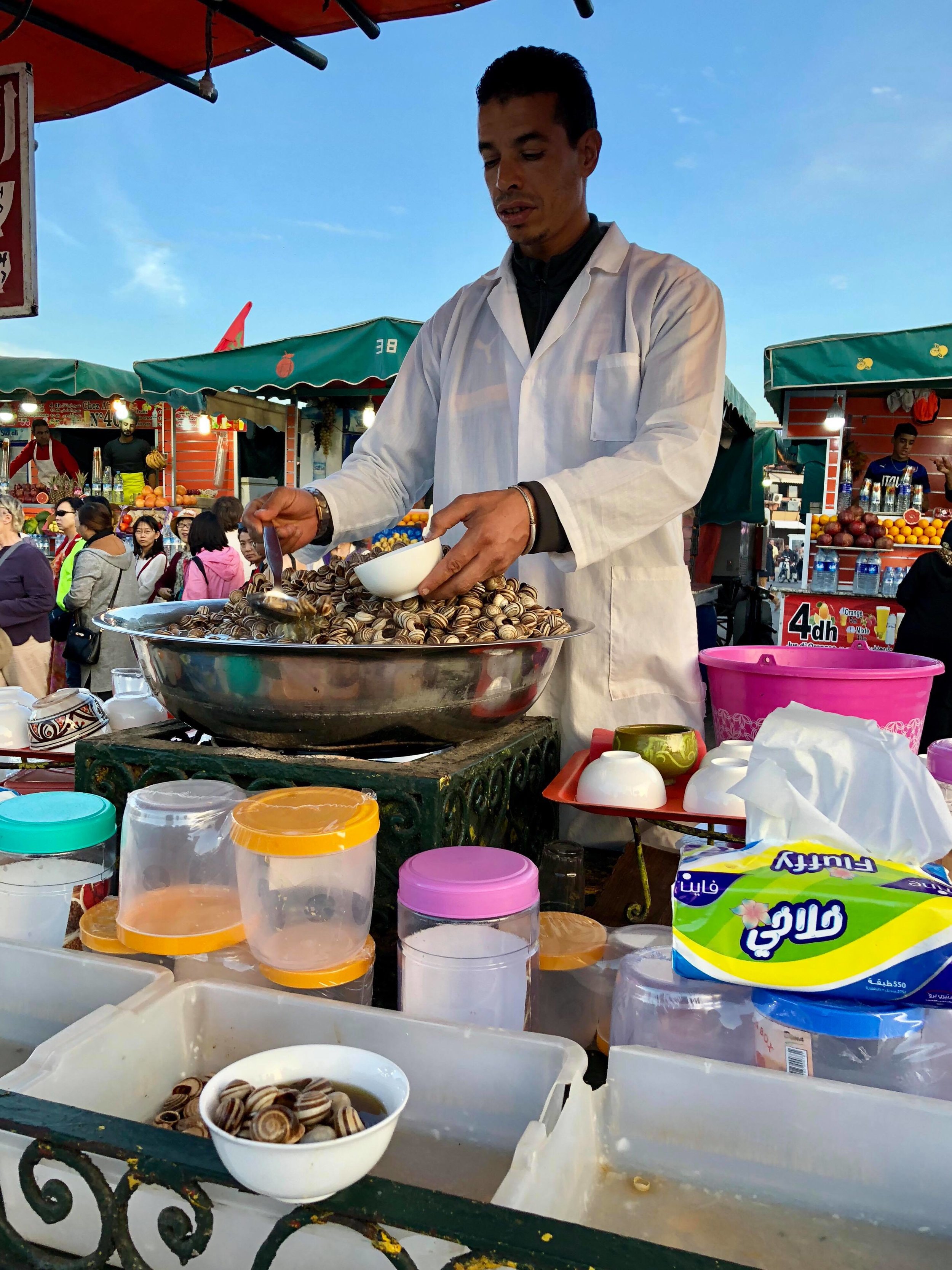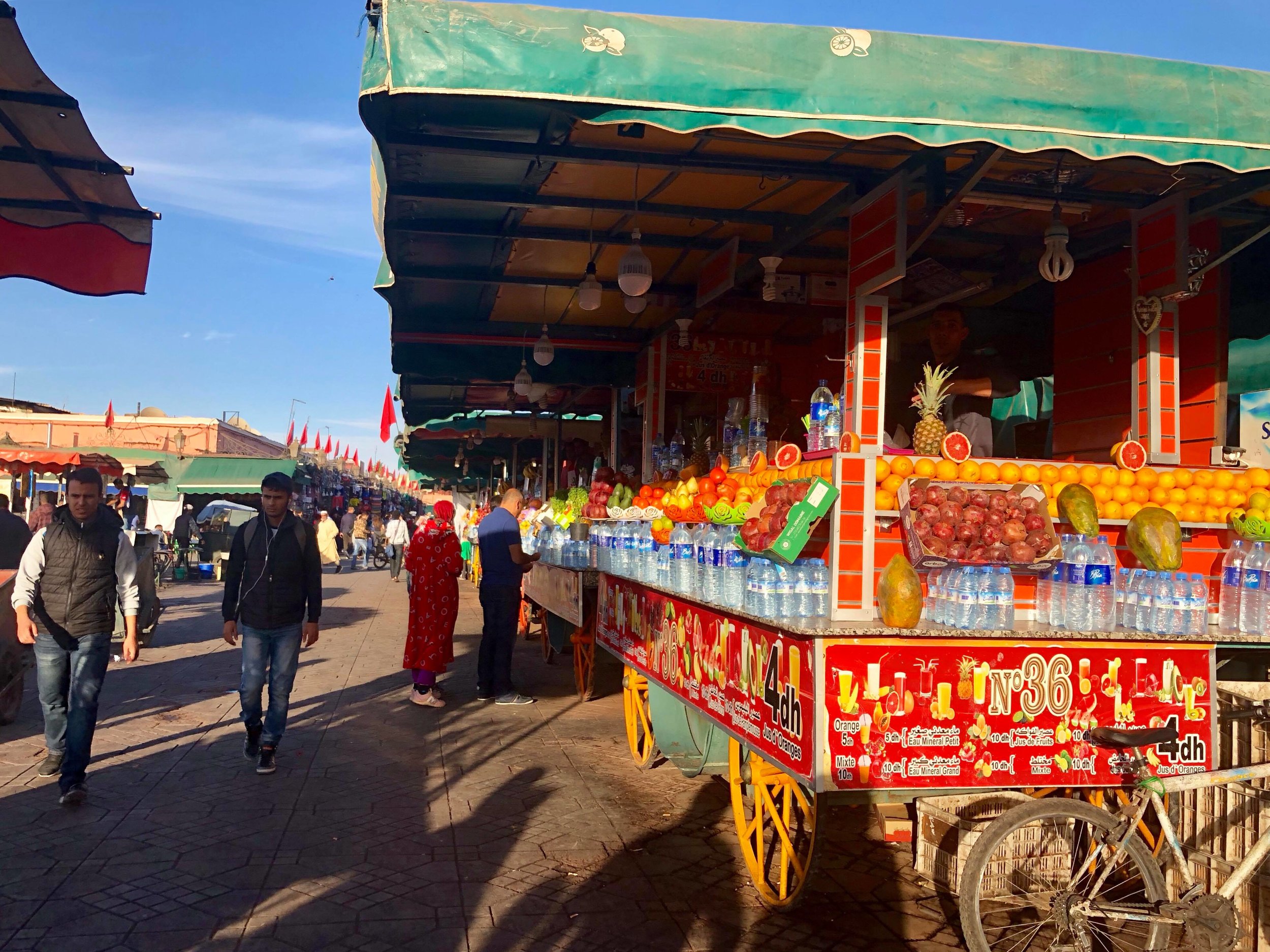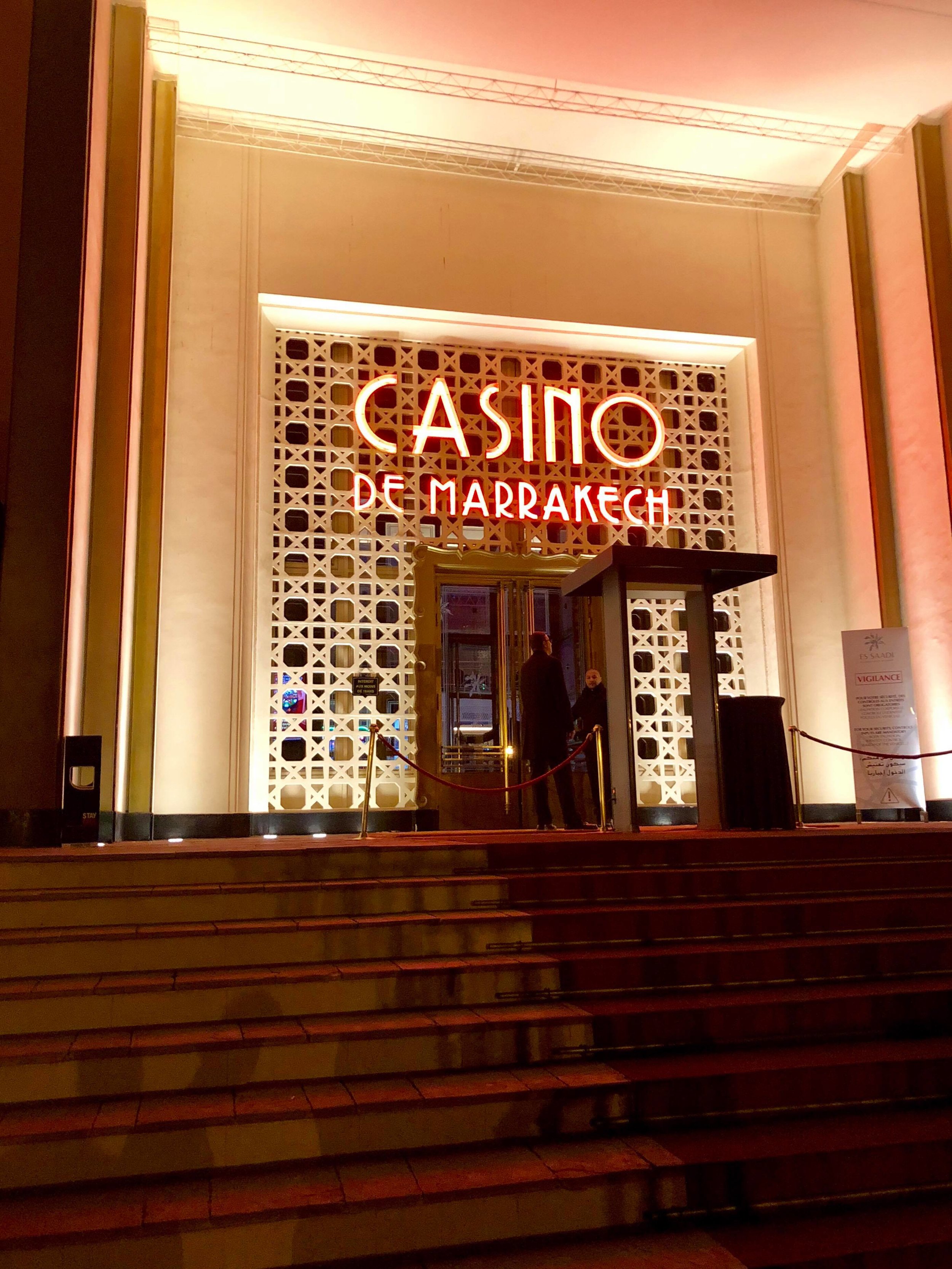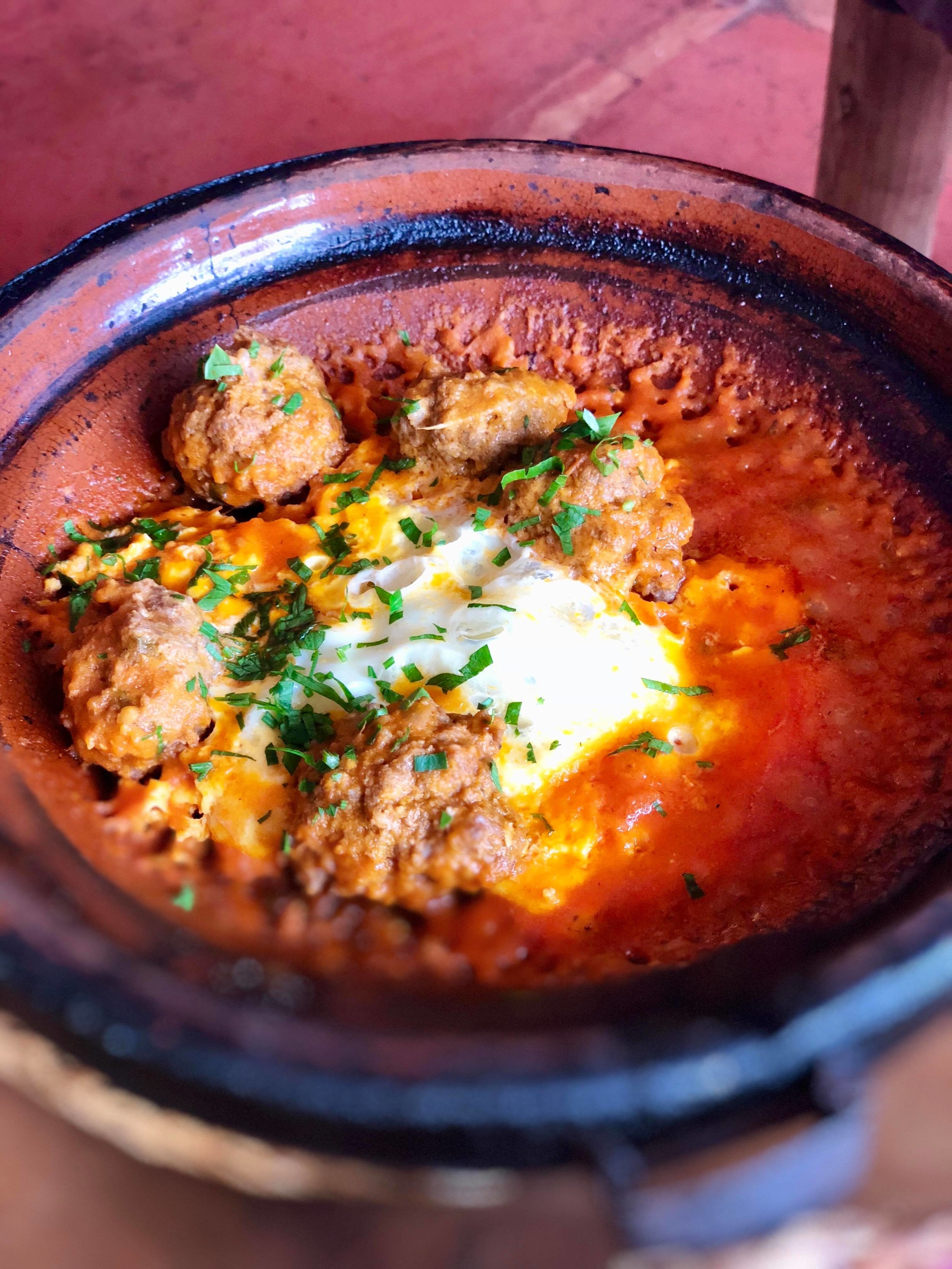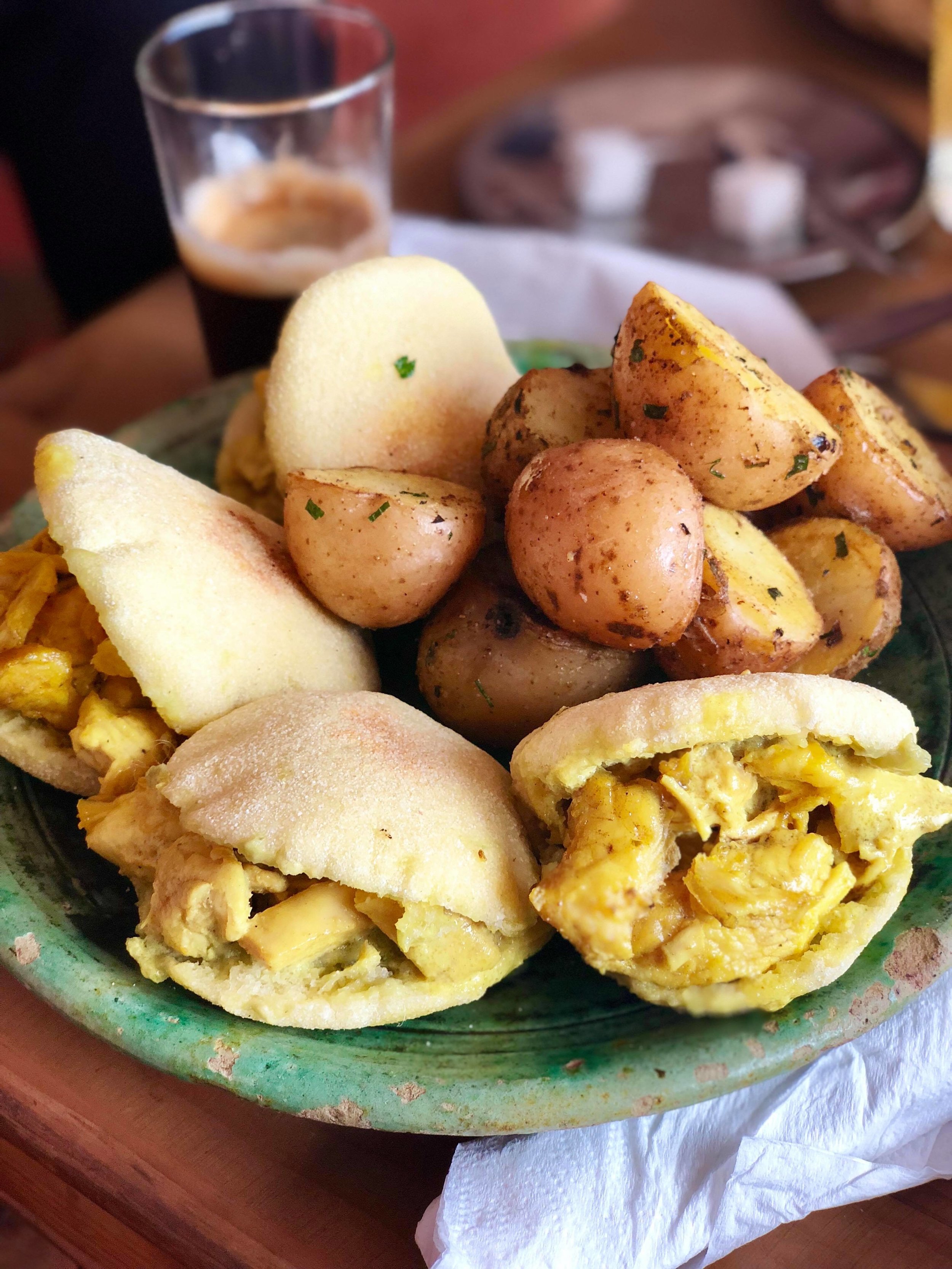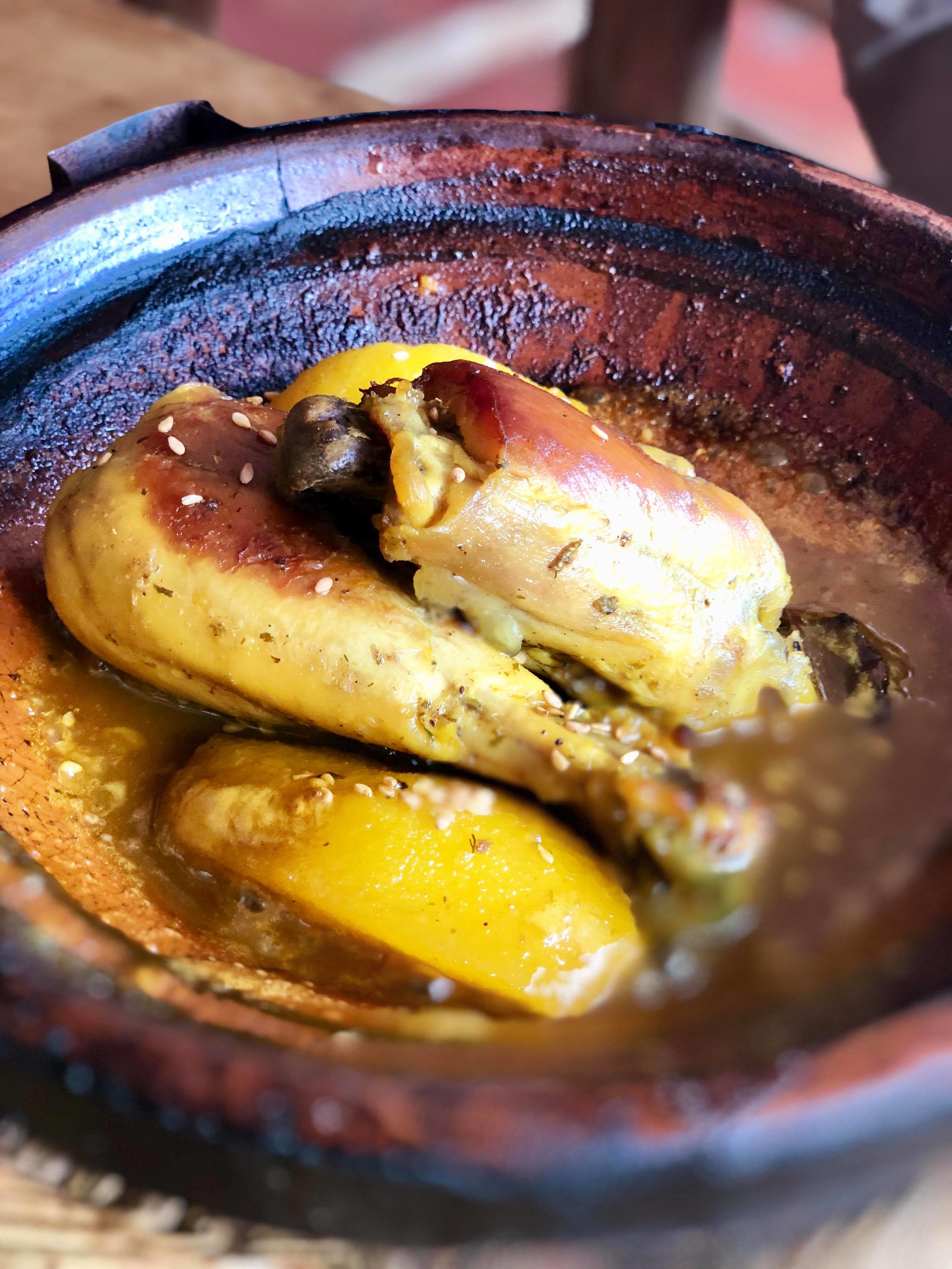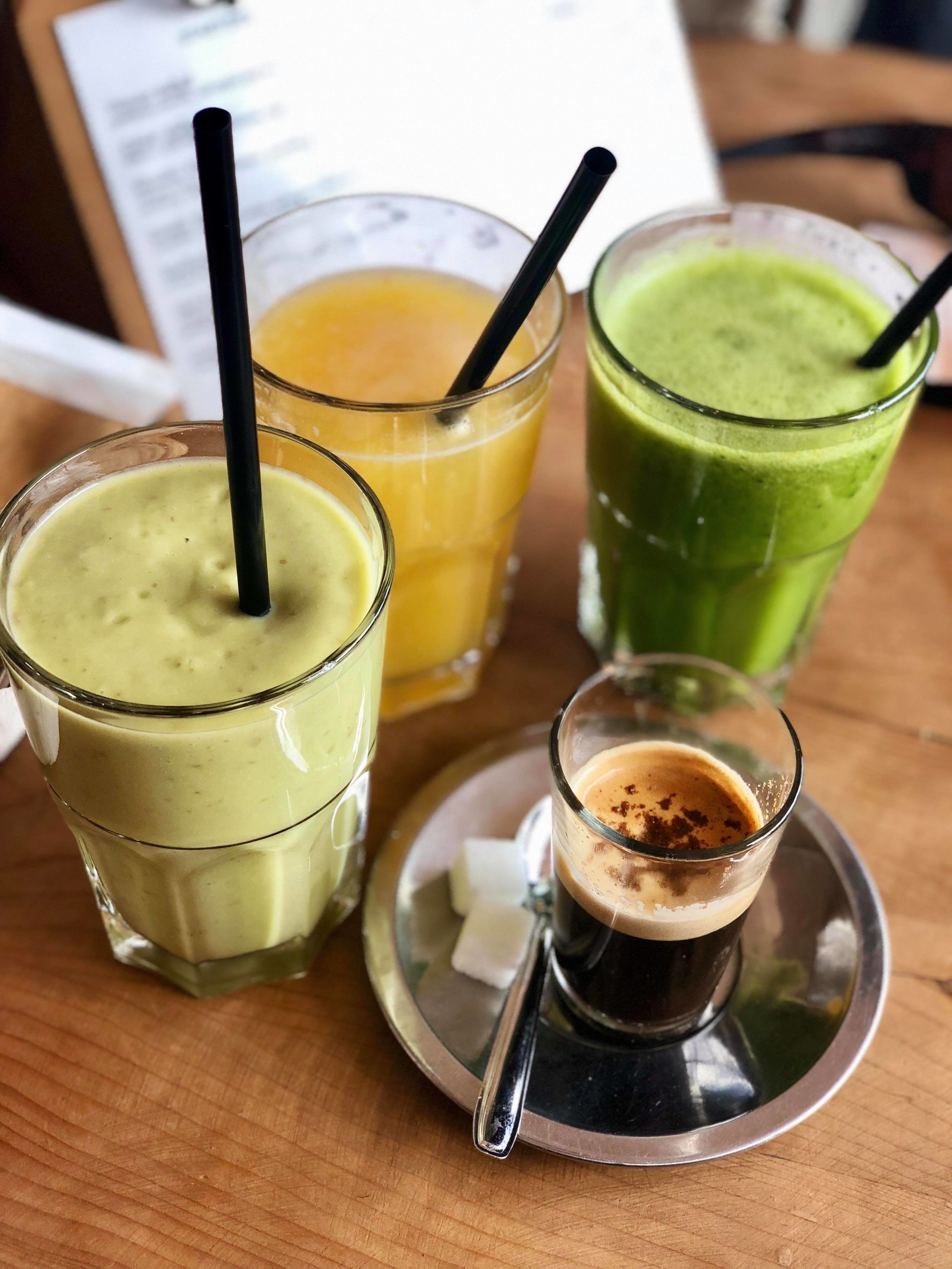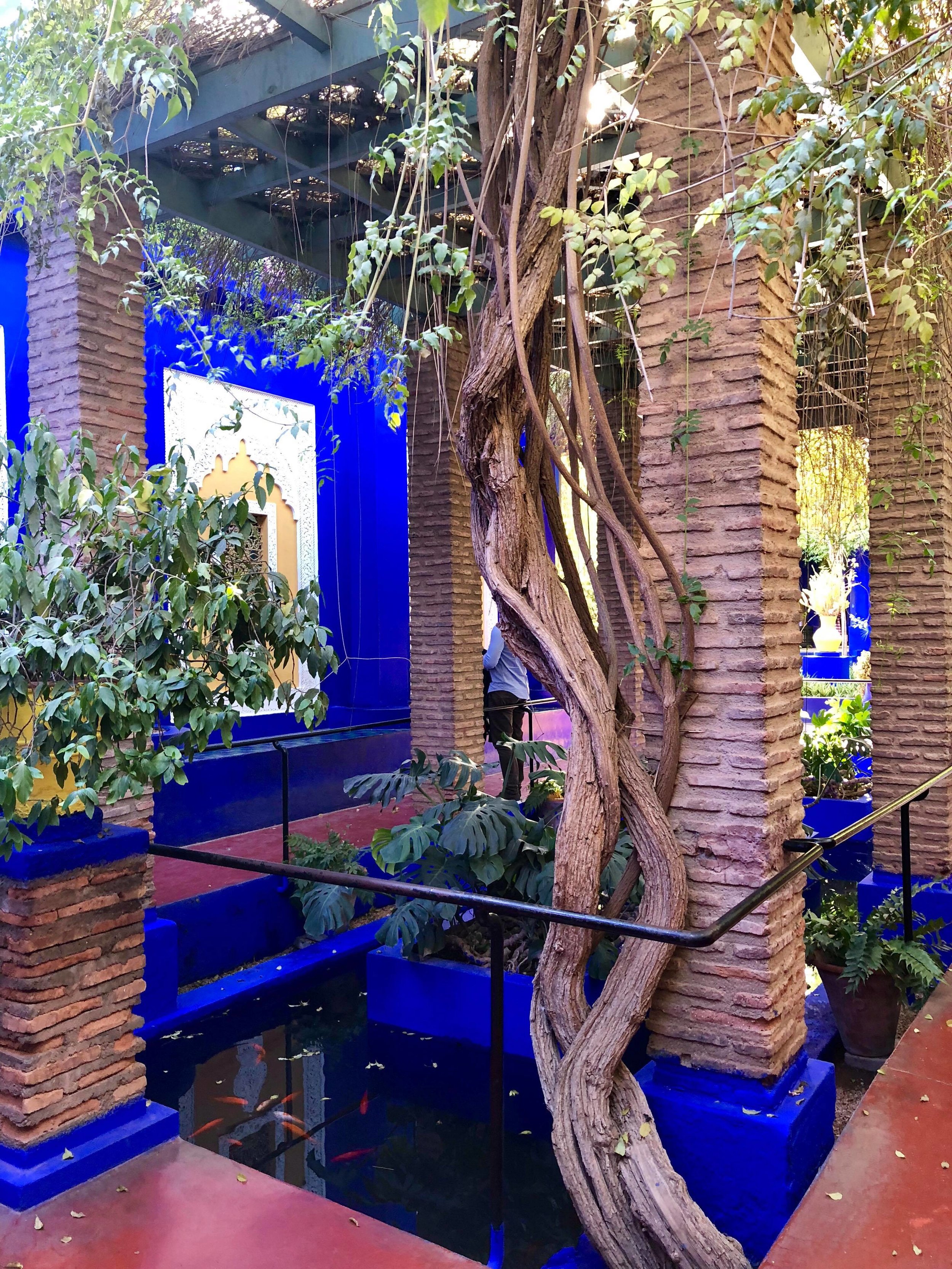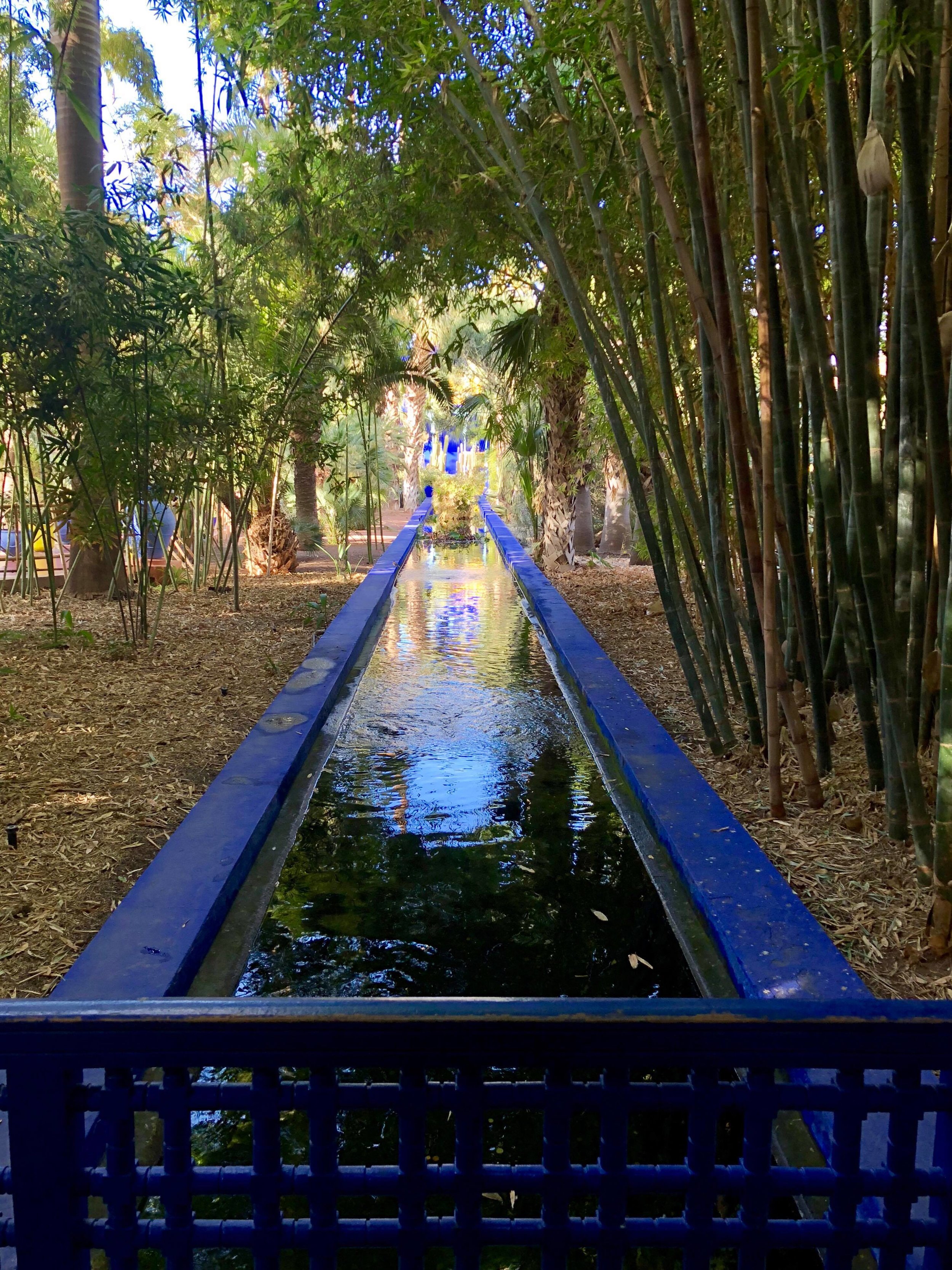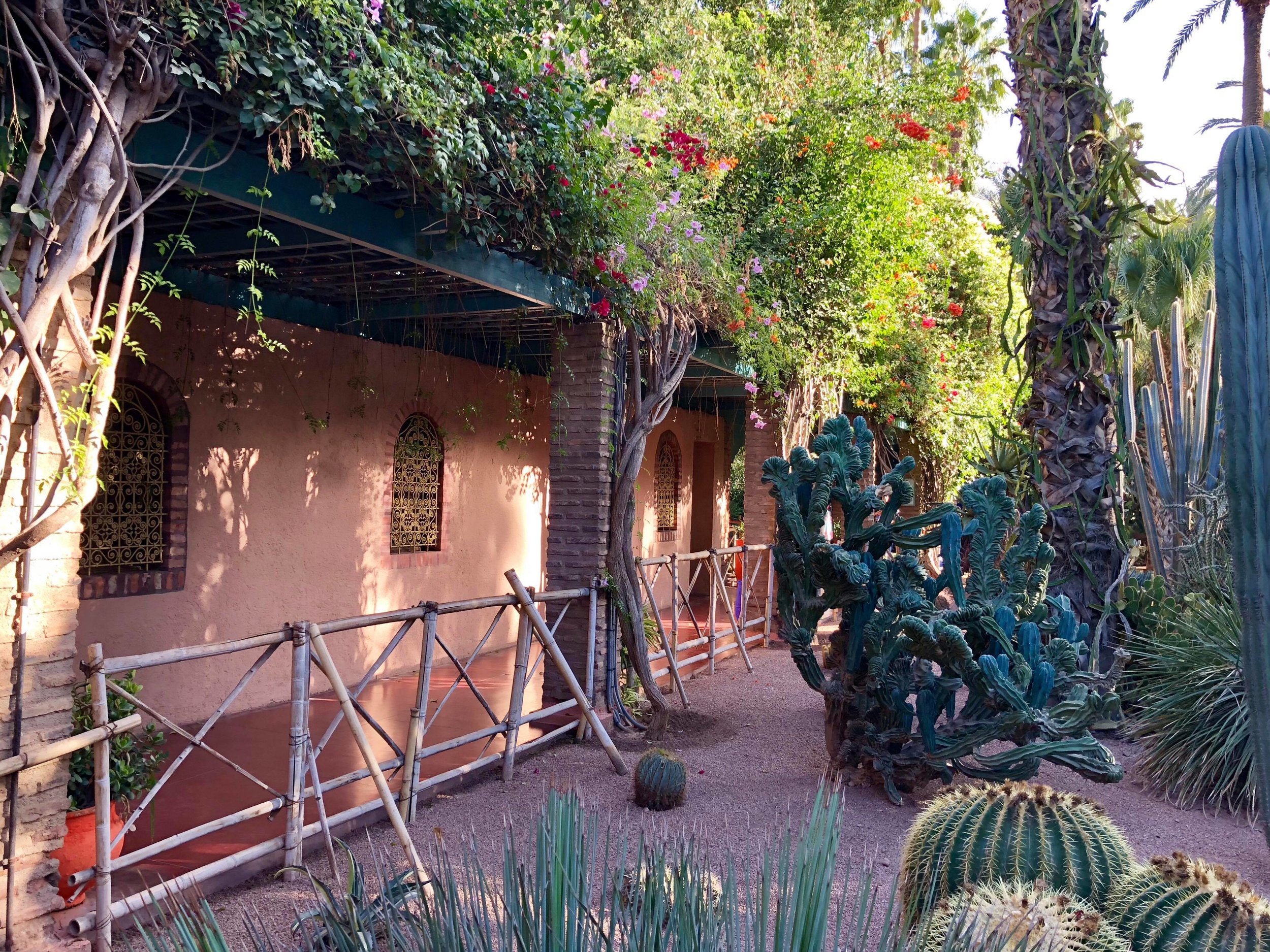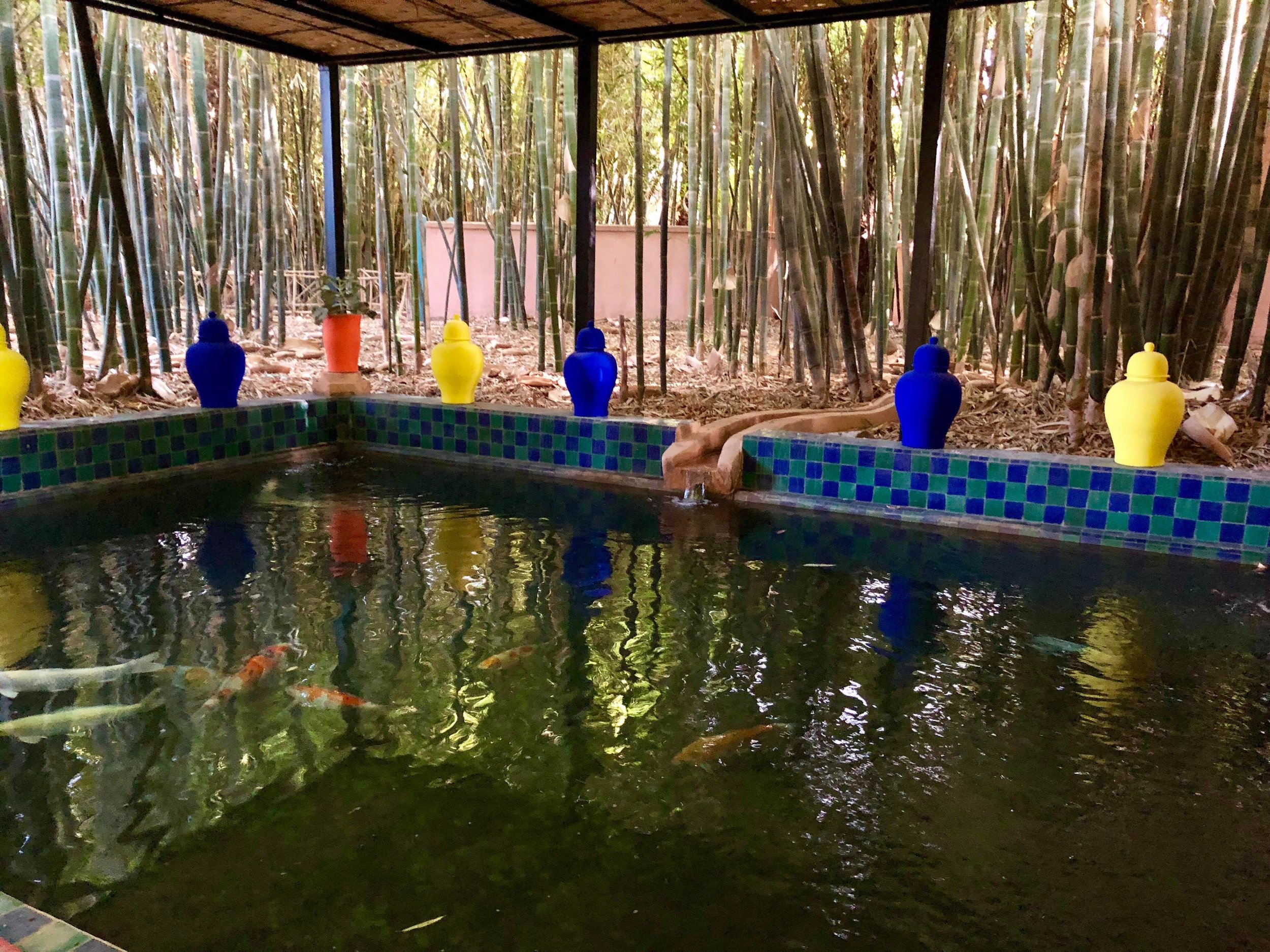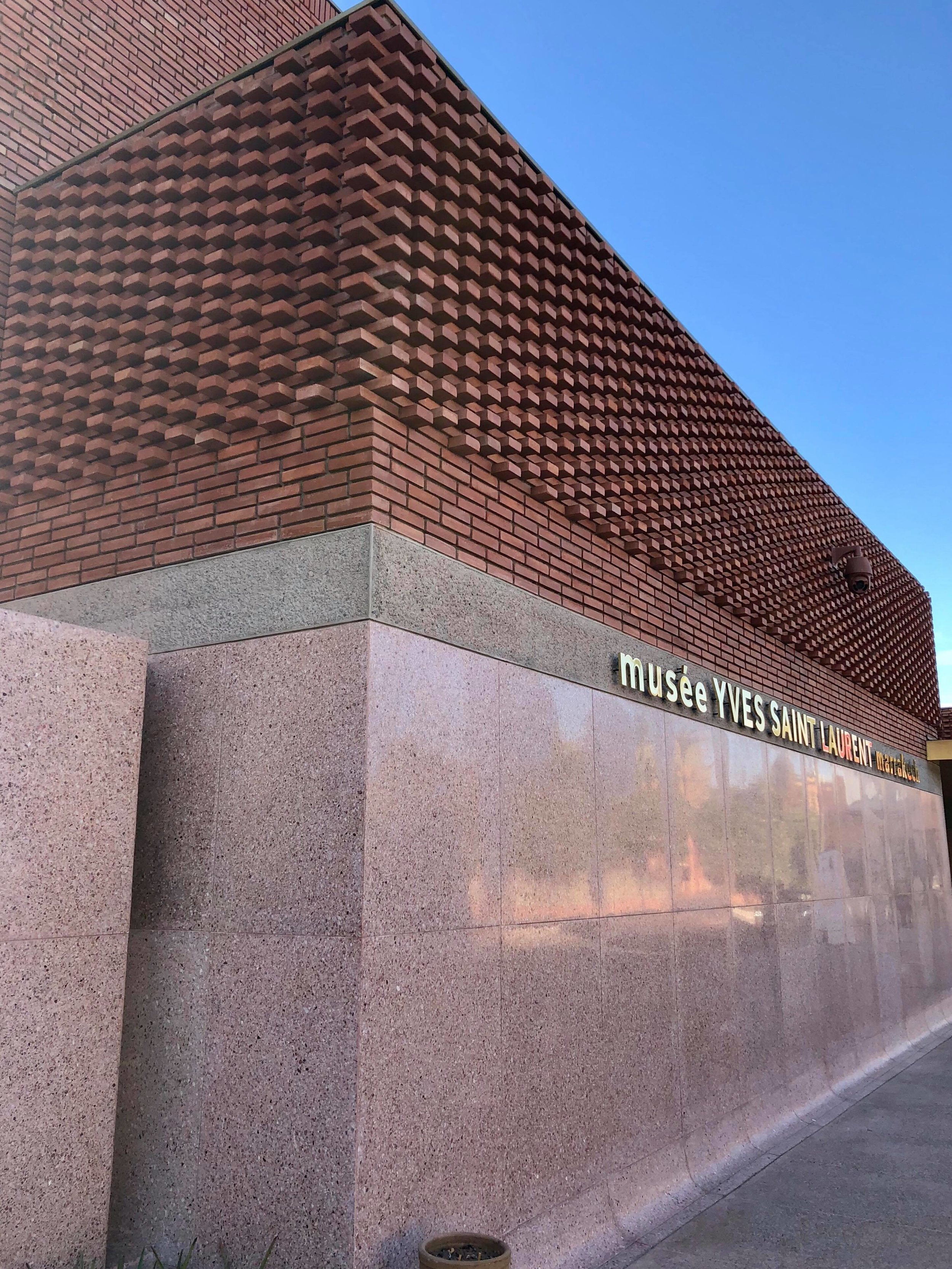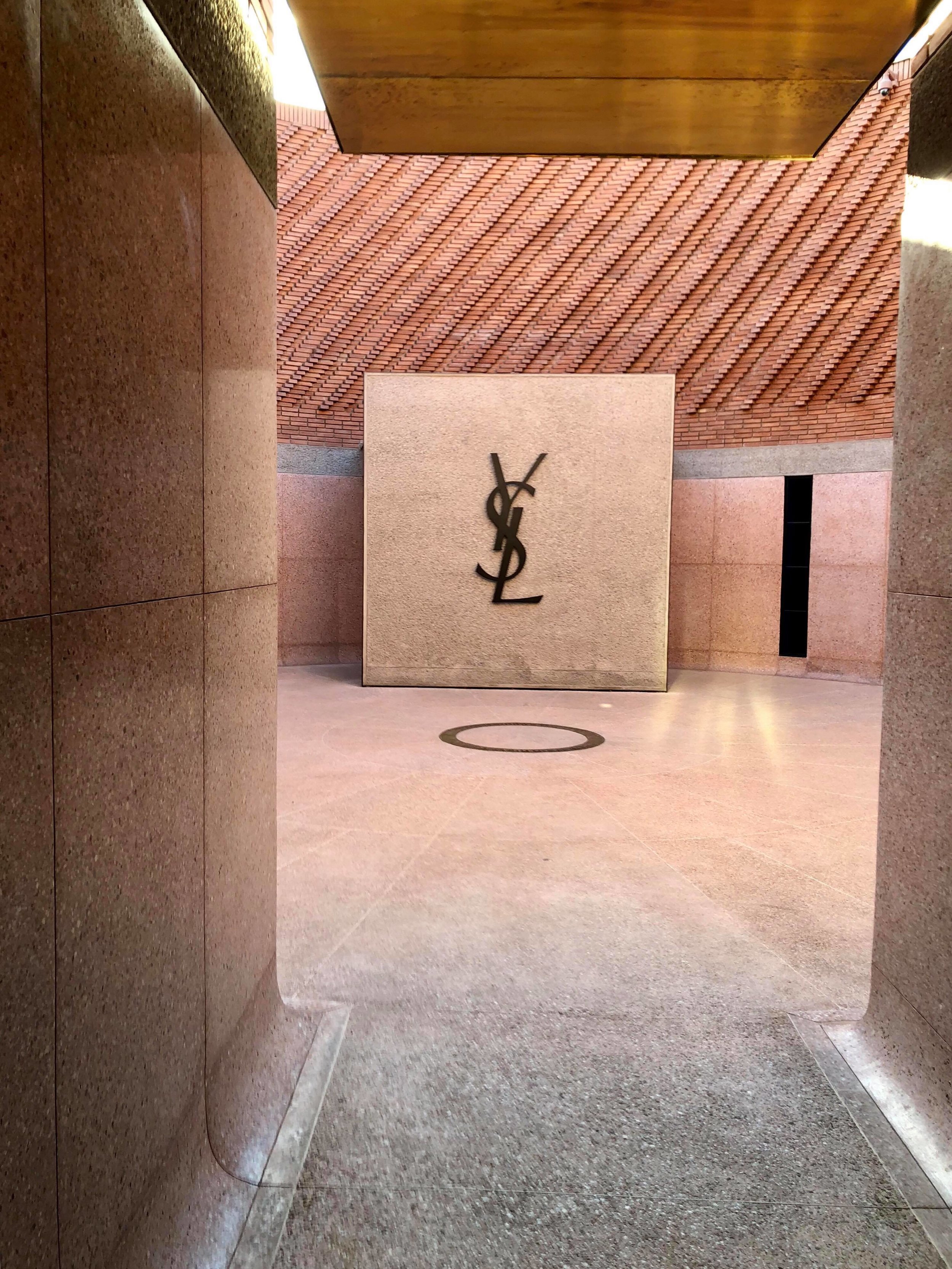The last leg of our journey into Morocco ends in Marrakech. Last but not least, a drive through the High Atlas Mountains takes us to this modern cultural epicenter. Over my two days here, I will be dazed by the commotion of the Jemaa el-Fnaa square, get lost in the souks of the Marrakech Medina, and marvel at the abundance of cacti in Jardin Majorelle. However, the definitive highlight of my two days here was surely the night spent going out in the city. Despite the religious conservatism that pervades across most of life in the country, the locals of Marrakech know how to throw a great party.
Our arrival into Marrakech was welcomed by an iconic structure towering over the other buildings near the ancient Medina - the Koutoubia Mosque.
We begin our time here with some delicious stewed beef couscous, topped with juicy carrots, potatoes, zucchini, caramelized onion, and a single charred soft pepper. The couscous was smaller than any I've had elsewhere, but made for a hearty base for the flavorful medley of vegetables, meat, and glazed onion on top.
Our first stop in the city was the Saadian Tombs where remains of royal members of the Saadian Dynasty (1578-1603) can be found. Originally sealed off with high walls extending far around the original grounds of the tombs, this burial site was only discovered by a flyover of the area by survey plane, in 1917.
Today the tombs are frequented by visitors for the beauty and intricacy of their décor. Note the size of the marble slabs and its height can be used to determine the approximate age and rank of those who are buried under. There were some incredibly small tombs here - a rather sad sight.
From the tombs, we walk through the old town towards Bahia Palace. Large sandstone walls line the paved streets of the city, and hijab ensconced women walk brusquely into the distasnce, harkening back to a distant time, long gone.
The old and the new juxtapose everywhere in Marrakech, streetlamps stand tall next to homes that have housed generations of its inhabitants for millennia.
Bahia Palace was built in the 19th century and was meant to represent the height of Islamic architecture and Moroccan style.
Geometric, symmetric, and lattice designs abound in this palace composed of several courtyards, one of which housed the 'harem.' The word means forbidden in Arabic, and can be used to describe a man's sisters, mother, and daughters in addition to his wives - as all women are 'forbidden' in such a sense and meant to be under his protection.
Workers continuously restore and repair this centuries old palace, tile by tile.
Continuing our walk in the historical part of the city, we wander into the labyrinth that is the Marrakech Medina. Wander, and easily get lost, in the maze of twisting and turning alleyways. Step down a cobblestone path - and feel as if you've been transported back in time - to the ancient times of the Berbers and Silk Road traders.
Seen here, a little boy carrying some bread home for his mother. Children bring baked bread to communal bakeries in the medina, usually located conveniently below a 'hammam,' or traditional bath, to bake in the morning, and by lunch, the return and bring back the freshly baked bread for lunch, and dinner.
I must say that the eclectic mixture cobbled next to one another down alleyway upon alleyway made for some of the most delightful shopping I had ever done on a trip.
Definitely don't be afraid to drive a hard bargain with the vendors here. I bargained for a purse by offering a quarter of the asking price, and it was immediately accepted. Clearly, I had overpaid, and later discovered the right first counter-offer can be as low as 1/10th of the initial asking.
One of the main thoroughfares of the medina, seemingly selling everything under the sun - from your basic tourist wares: magnets, glasses, postcards, to more obscure souvenirs, seen below.
Some of my favorites: Aker Fassi, left, a traditional Berber lipstick made of poppy leaves, pomegranate seeds overlaid on the interior of an open terra-cotta pot. Application is done by finger, wet your finger first.
Left, the bright sapphire blue of indigo captured my eye - my favorite color, brilliant, compelling, majestic and graceful all at the same time.
Various sundries for sale, left, including blocks of musk (for incense, perfume) and kohl powder in wooden containers used to line the eyes.
A tip if you find yourself lost in the souks of the medina - ask any vendor or passerby in the medina for 'la Place,' and they will guide you here. The famous Jemaa El Fna square of Marrakech is home to an eclectic mixture of food stalls, juice vendors, street performers, snake charmers, gypsies, shoe shiners, and much, much more. The cacophony of sounds that will descend upon your ears as one steps into this bustling square can be truly overwhelming.
Apparently a local delicacy, braised snails! A dollar for a bowl of these unshelled goodies - use a toothpick to drag the body out of its home. But don't look too closely, I'm pretty sure some of them were still alive!
Freshly squeezed juice will be tempting under the hot sun, and row upon rows of juice stands await advertising these concoctions. Beware, however, that the elevated stands are often meant to obstruct your view of what they're doing in the stalls, which means either your juice can come diluted with water, or is poured from a pre-made mixture that can consist of a variety of things. I ordered a pomegranate juice, for example, and pretty sure it came with some amount of watermelon in there - not that it wasn't a refreshing mixture, of course.
Insider tip from our guide to capturing the square: find a café or restaurant with a terrace of the plaza, settle down with some mint tea, and take your photos from an aerial vantage point.
Now for the highlight of the trip - our night out on the town: it started with a music venue/fancy restaurant/bar tucked in the midst of a casino...after a (few) bottles of whiskey and some truly amazing live performance, we were ushered to a club for the real party to begin (keep in mind, this was somewhere between 2-3am)
Now I must admit my memory is slightly spotty during this segment of our little interlude into Moroccan nightlife, but lets just say that this (predominantly male) crowd of partygoers knew how to have a good time. There were sofas, dancing, stages, stairs, elevated platforms, DJs, performers, oh, and another fire show. It. was. glorious.
I highly recommend getting a taste of the nightlife in Marrakech. Locals come from all across the nation to go out here, so I suppose in a way, Marrakech is the Las Vegas of Morocco? For those worried about the safety of going out in such a conservative nation, I found that people were all around respectful and kept to themselves. It probably is a good idea to go in a group, and perhaps with someone who knows the city. Party-goers like to dress up for a night out here, so either pack your heels or high-tail to Zara for a taste of local retail therapy.
Ah, the morning after a night spend dancing till 5am (we were assured that it was an 'early' night by local standards. Nothing calms an oncoming headache quite like some strong coffee and a hearty breakfast (ok, lunch).
Kefta (meatball) tagine with an egg in the middle. We had the same dish two days ago, at Todgha Gorge. Right, a house burger that was just, somehow, really good. So fresh, so tender, so flavorful, so much better than a big mac.
Left, a delicious chicken sandwich creation ensconced in mini-pita bread. The chicken seemed to have been marinated and drenched in some kind of creamy curry sauce. Right, an absolute highlight of food eaten on the trip - a chicken and pear tagine, drizzled with sesame seeds and lightly grilled to perfection. The caramelized pear was sweet and fell apart as one tried to fork it, its sweetness adding to the chicken that was truly some of the most tender I've ever had.
A must for the morning (read: the hangover), freshly squeezed OJ, spinach apple juice, and avocado milk. Some strong (Turkish) coffee that hit the spot (woke me up).
One of my favorite restaurants in Marrakech, café des épices featured three floors of seating, large windows and a patio, and scrumptious food. Highly recommend for a well-priced Moroccan & western fare.
Last by not least, we stop by the Jardin Majorelle on our last day in the city (and the country).
Originally a garden owned by the French painter Jacques Majorelle and subsequently purchased by the renowned designer Yves Saint Laurent, today the garden is both a tribute and a museum to the brand and its visionary founder.
Azure, indigo, sapphire - however you name it, this brilliant shade of blue stands out goegeously against any backdrop. Like I said, my favorite color.
Nearby, the Yves Saint Laurent museum; tickets can be purchased either individually or with the admission to the gardens.




